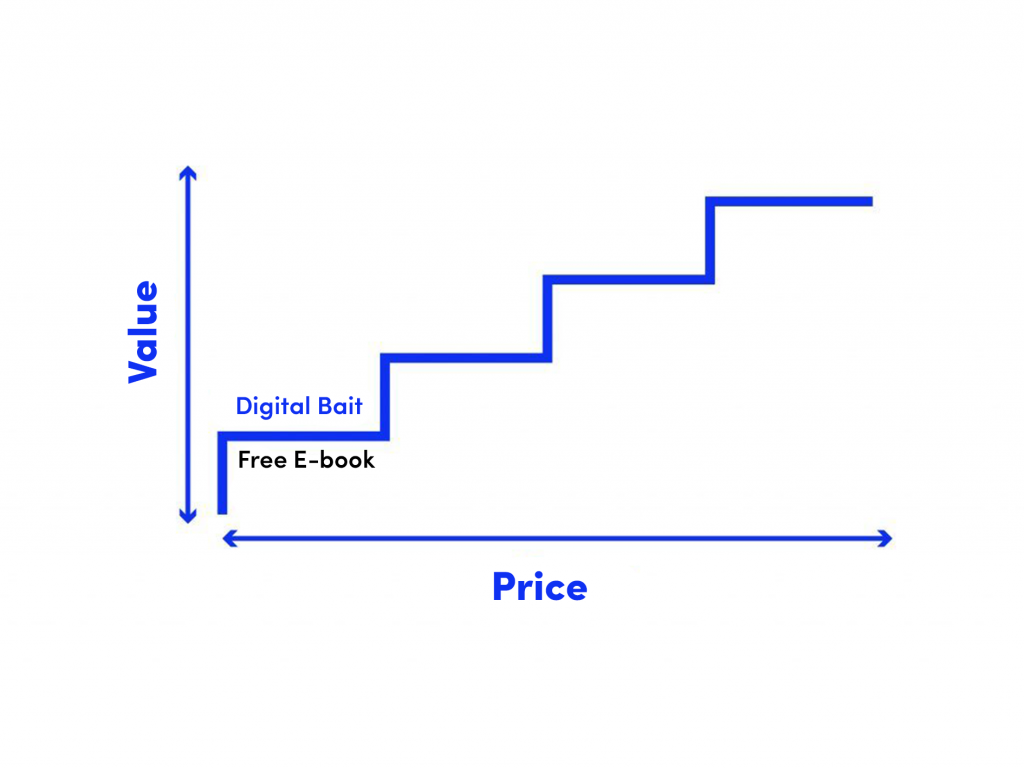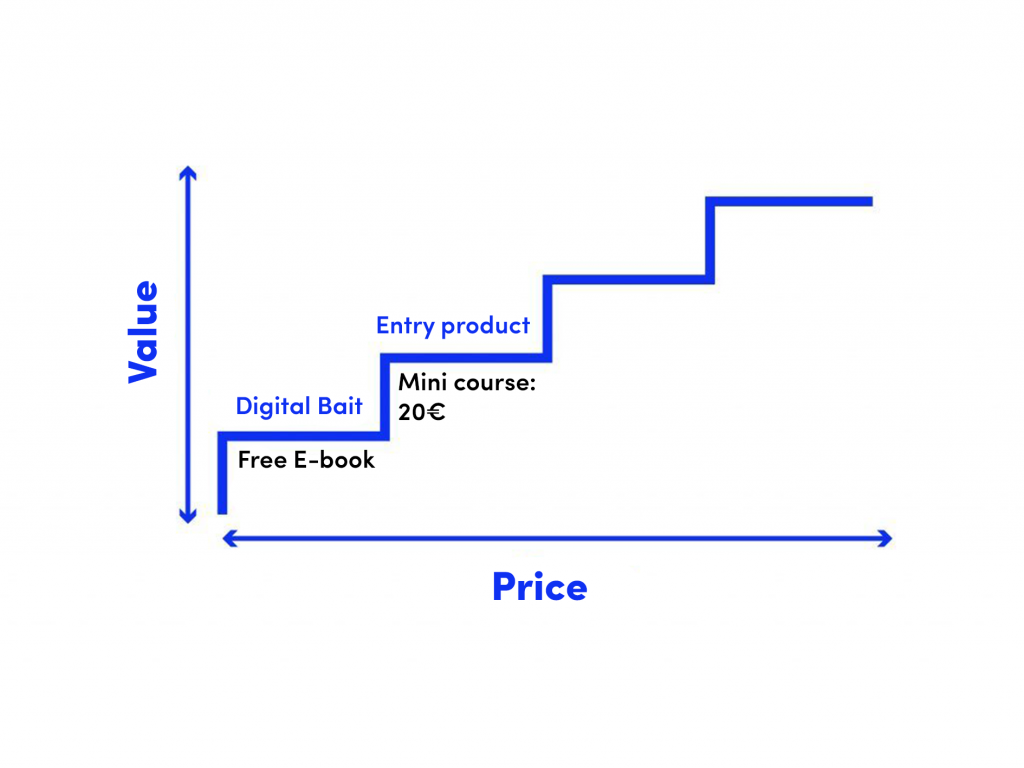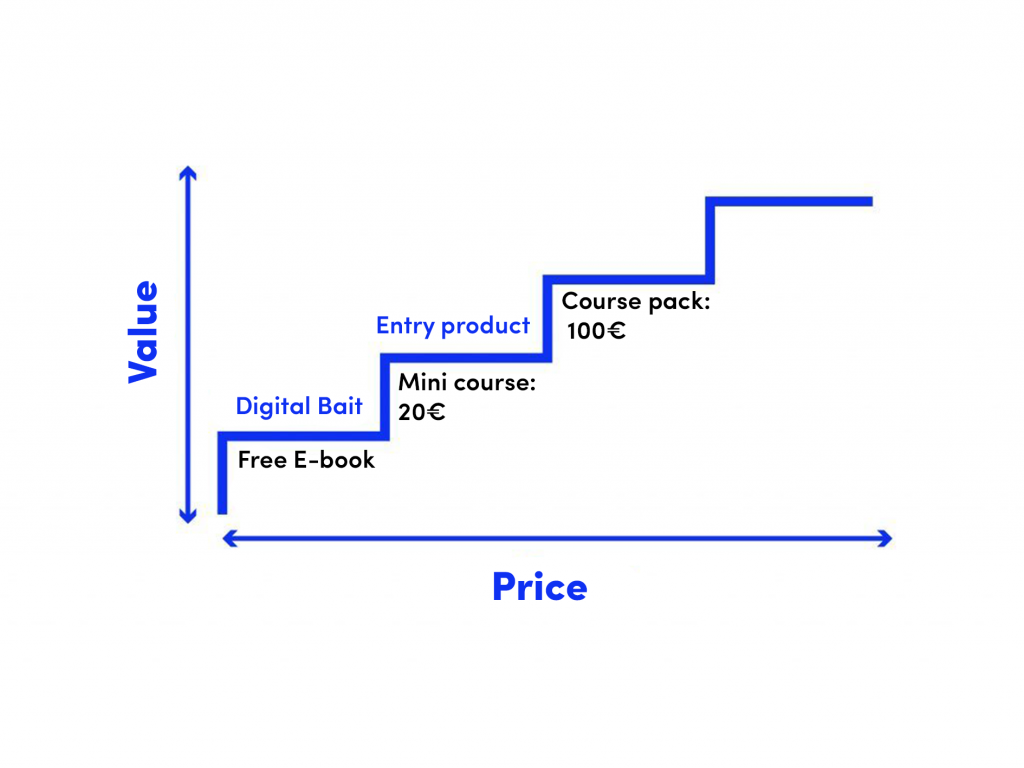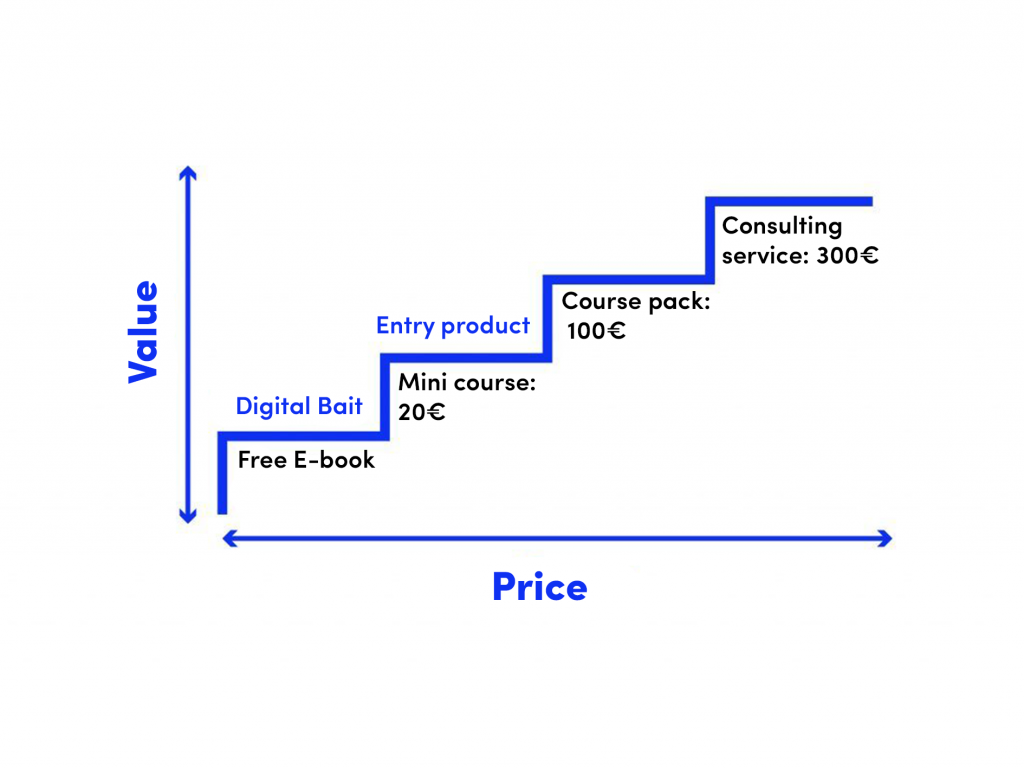“If you give us €20,000, we’ll create a marketing plan for you”
If any company came to you and made you this proposal, as it stands, you would probably think they were foolish.
Why? Because it presented zero value, and a lot of price.
Yet this is what many companies do when they sell online. They promote their most expensive offer, without delivering any kind of value.
To be able to sell the €20,000 plan, you have to use the Value Ladder.
Before you understand what a value ladder is, here is what you will read in this article:
- What is the Value Staircase
- The 4 Steps of the Value Ladder
- Generation of Customer Trust and Retention
What is The Value Ladder
The Value Ladder is a strategy used to follow the customer through all stages of the funnel, and get him to invest more and more money in your company.
The logic is to build different products or services, with different levels of offerings and pricing, and as the costumer climbs up the “ladder”, the more you earn as a business.
To better understand what this concept is all about, here is how the Value Ladder works in action.
The 4 Steps of the Value Ladder
1st Step – Digital Bait
To get the customer to climb the first step of the value ladder it is ideal to offer him a free product.
This product will work as digital bait or a lead magnet. Digital bait is used to attract the customer’s attention and lead him to learn about your brand.
Although this product is free, it is very important that it has value, so that you can leave a positive image of your brand on the customer.
To see exactly what this product could be, let’s take the example of a Paid Media Specialist. He can offer as digital bait an e-book on Facebook Ads.

Step 2: Entry Product
Once you have delivered a free product to the customer and have proven that even for free, your brand can add value, it is time to start selling.
If you try to get the consumer to go from a free product to buying a very high-value product, you are unlikely to make the sale.
Then, on the 2nd step you should prepare an entry-level product for your potential customers.
This product should be of higher value than the product offered before. But (and it is a big but) it should be of low price.
In fact, it should be so low that after you have offered good content to the customer (on the 1st step) he will feel obligated to buy this low value product (on the 2nd step).
Going back to the example of the Paid Media specialist, after having offered the e-book, he can now propose to the customer to buy a mini-course on Facebook Ads.

Step 3: Tier 2
At the third step the logic is the same. The more you step up, the more value you charge for the product.
In this step you can include the main offer, the one where you want most of your customers to reach.
In the case of the Paid Media Manager, after selling the mini course for 20€, it is now time to sell a pack of courses for a higher value, for example, 100€.

Step 4: Tier 1
If all goes as planned, your customer is now at the end of the ladder.
The good news is that since your customer has already taken 3 steps to get here, the probability of taking the 4th is high, since he is engaged and satisfied with what he has received so far.
This is your opportunity to sell the most expensive and highest value product you own.
In the case of the Paid Media Manager, on this fourth step he can sell a consulting service worth $300.

Note: on all of these steps there does not necessarily need to be only 1 product. Each product must be tailored to the needs of the customer, so you can have different products to suit customers with different needs.
Similarly, the value ladder of your business can have more than 4 steps. The important thing is that as the customer climbs one more step, the price and value of the product increases.
Building Customer Confidence and Retention
A customer only trusts your brand after buying a product from you, and the product meets or exceeds his expectations.
Remember that customer satisfaction is like a mathematical formula:
Expectations – Reality = Customer Satisfaction.
The Logic of this value ladder method is to build trust, gradually, so that the customer feels more comfortable spending more with your brand or business.
It’s like getting into a swimming pool on a hot summer day.
First you get your feet wet, then your legs wet, and then you build up the courage to get in completely. (Of course, there will also be those who dive in at once, in which case the better it will be for your business).
Then, once you have gained your customer’s trust, it is easier to get them to climb the steps of your value ladder. By increasing the value of what you have to sell, the customer who already trusts you will recognize the benefits of what you are offering.
Satisfied Customers = Retention
Satisfied customers become brand promoters and help convey a positive image to the general public.
In addition, retaining a customer can be up to 7 times cheaper than acquiring a new customer.
A satisfied customer moves up the value ladder more easily because he doesn’t need as much convincing. So when you apply the value ladder to your brand you can retain customers and scale your business.
Now that you know the importance of the value ladder, are you ready to apply it?
The process of taking the consumer through the various steps will be easier if you have a planned content strategy.
Let Swonkie help you with that task and try it free for 14 days here.

